¿Are you looking for information about how to prepare for a trip to Machu Picchu in Peru? For those who are thinking of visiting Machu Picchu or any other destination in Peru, this page offers useful information on how to prepare, what you need, information on the weather, and other information.
Contents
- Tips on documents you should bring to travel
- Tips on buying travel insurance
- Money exchange tips
- Tips for your luggage and packaging
- Tips for wearing clothing
- What types of shoes to bring for a walk
- Tips for the weather and climate in Peru
- Tips for toiletries
- Sockets and information about electricity in Peru
- What to eat and food security
- Tips on health, supplements and medications
- Tips for a good personal attitude
TOUR IN PERU is a travel company in Peru of Peruvian owners and workers, authorized and licensed to operate in their destinations, and we have many years of experience conducting tours to different parts of Peru, so we have inside information about what what you need and how you can prepare properly. Our next video shows some information that may also help you.
1. Tips on documents you should bring to travel
A valid passport is required to enter Peru. Depending on the country of your citizenship, you may need a visa to come to Peru. (Citizens of the USA, Canada and the European Union do not need a visa). Check with your local travel agency for more information, or simply check online at the website of the Peruvian Ministry of Foreign Affairs (https://www.gob.pe/rree) or the Ministry of Foreign Affairs of your country of citizenship. You must carry your passport with you at all times in case of random checks. If you need a certain kind of medicine or have a health problem, you should bring your medical history.
2. Tips on buying travel insurance
It is recommended that you purchase travel insurance. When you buy your travel insurance make sure that the minimum coverage includes: the cancellation or interruption of the trip, delay of the luggage, theft or loss of luggage or documents, medical expenses, emergency assistance, accidental death and dismemberment. We recommend having a copy of your insurance policy on hand throughout your trip.
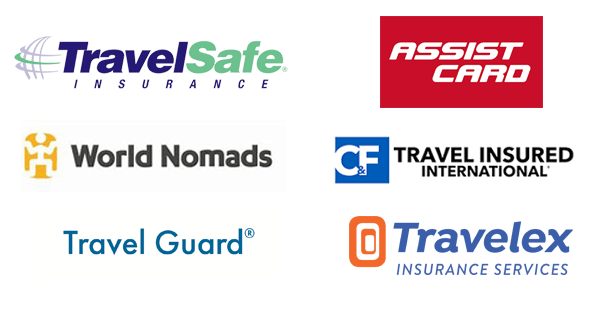
We present some options for your travel insurance.
3. Money exchange tips
ou can change the money from your country of origin in Peru. ATMs, banks and money changers are located within the main tourist areas. It is a good idea to always have some cash for food and shopping. We recommend not carrying large amounts of cash. American dollars are accepted in some shops and restaurants in Peru, but not all, so it is best to change your money and bring soles (official Peruvian currency). Major credit cards are widely accepted. Make sure that your Peruvian currency bills are clean and free of any breakage or damage, as they may not be accepted by many stores or vendors.
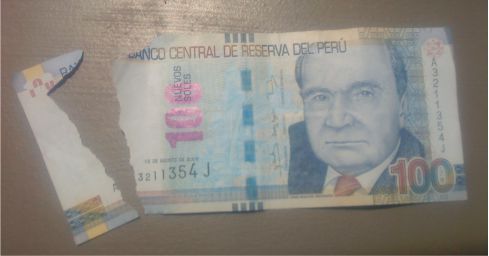
Prevent your bills from breaking
4. Tips for your luggage and packaging
Airlines and trains have weight limits on luggage per person in addition to other restrictions. Domestic flights in Peru generally have lower weight limits than international flights. You will have to carry your own suitcases or backpacks on some trips, and so it is good to carry light luggage.
5. Tips for wearing clothing
Depending on the month and place you visit Peru, you can expect from very heavy rains to intense heat. Due to the fact that Peru also has drastic altitude differences, different temperatures can be recorded in the same area. Furthermore, temperatures are often different during the day and at night. It can be quite hot at times and quite cold at night, so it is good to have some clothes for both types of weather. Bring a bathing suit if you plan to visit a place with hot springs (for example our package to Machu Picchu and Aguas Calientes) or a swimming pool.
6. What types of shoes to bring for hiking?
Many of the historical places such as Machu Picchu are in changing areas in terms of terrain types and so hiking is challenging (Good option: Inca Trail Machu Picchu) and appropriate hiking shoes are required for your personal and pleasant safety travel experience. Shoes must be comfortable, they must have a good tread. Closed toe shoes are the best way to keep your feet warm, safe and protected.
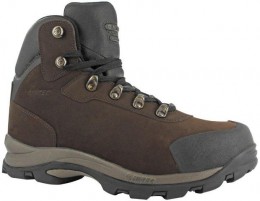
Ideal shoe for the Inca Trail
7. Tips for the weather and climate in Peru
In Peru there is a rainy season, but it can rain any day. It is better to bring a rain poncho instead of an umbrella, since you will have your hands free and you will be able to move freely, especially if you are hiking the Inca Trail. You can carry it in your backpack as long as it doesn’t rain.
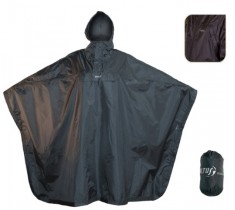
Rain poncho frequently used in Peru
Due to some very high altitudes and proximity to the Equator, the Sun in Peru is very strong. Try to take proper care of your skin to avoid sunburn and discomfort.
Light, loose, long-sleeved clothing is best, along with a good hat, protector, and sunglasses. Also bring sunscreen. Natural varieties based on zinc oxide are the safest options for your health.
8. Tips for toiletries
All hotels and hostels in Peru offer soaps and shampoo, but it is a good idea to bring personal toiletries, these are some of the items you should consider bringing.
- Shampoo
- Hair conditioner
- Soap
- Toothbrush
- Toothpaste
- Deodorant
- Personal razor
- Comb and / or brush
- Feminine hygiene items
During various times of the year, and in different places, you may encounter mosquitoes, flies and other insects that are attracted to odors and that can bite. For your personal safety, as well as the comfort of other travelers, it is best to use fragrance-free products and carry perfumes. A natural insect repellent, and products like tea tree oil, citronella, musk oil, or peppermint oil may be helpful as well.
Other things you might want to bring:
- Large Travel Backpacks
- Cloths or hand sanitizers / or dry alcohol (not based on triclosan)
- Ziploc bags – you will find many reasons to use them
- A small flashlight – this is a good idea in case of power failure, and for personal safety
- A notebook or diary, and the pen to record any information
- A cell phone or other small device that will serve as an alarm clock
- A small first aid kit
- And, of course, a photo or video camera with the right battery and a corresponding charger
And these are some things that it is not advisable to bring
- Expensive items or jewelry
- Unnecessary electronic devices
- Knives or weapons
- No illegal substance in Peru
9. Outlets and information about electricity in Peru
The electric power supply in Peru is 220 volts AC at 60Hz. A double flat blade (as used in North America) and single round pins (as used in continental Europe) are standard in Peru. If you have a device with a different type of connection, you need an adapter (which you can borrow from your hotel).
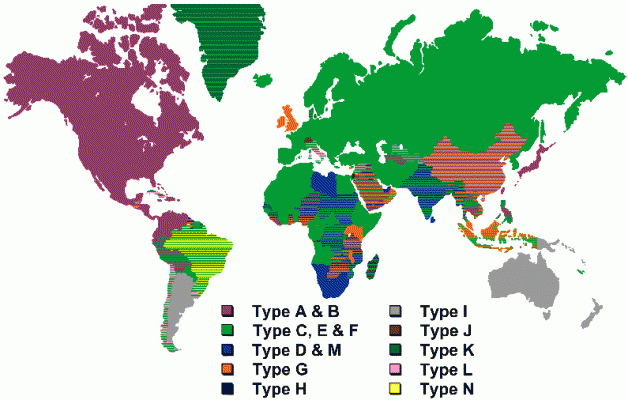
Types of electrical connection in the world
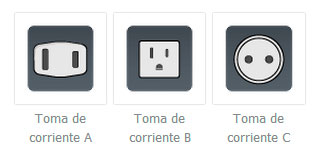
Outlets in Peru
10. What to eat and food security
Be careful when eating on your trip. consider lighter meals, vegetarian food is the most recommended. Tap water in Peru is not recommended to drink directly, wash food, or brush your teeth with purified bottled water is readily available everywhere, and most hotels provide it. High-end hotels have water purification systems.
11. Tips on health, supplements and medications
One of the most common events for newcomers to Peru is altitude sickness. This can range from a headache, shortness of breath and fatigue to insomnia, heart palpitations, and flu-like symptoms. In rare cases more severe symptoms may require hospitalization. One of the best ways to prepare for and prevent altitude sickness is to do the following:
- Practice a cleaner and more natural diet starting weeks before your arrival.
- Avoid smoking and consuming alcohol, as well as stimulants like coffee or energy drinks.
- Take some supplements that can help strengthen your body and immune system for at least 2 weeks before coming to Peru, and during your stay in Peru. These include:
- Antioxidants like vitamin C, vitamin E or selenium
- Herbs like Echinacea, Garlic, Ginseng, Ginkgo, or Ashwagandha
- Other supplements like Chlorella, L-glutamine or Reishi
- Drink plenty of pure water to hydrate yourself a few days before your arrival, and continue to do so during your stay. Juice, soda, coffee or alcohol is not recommended. Remember that water has more oxygen than air, so it is essential that you stay well hydrated!
- Finally upon arrival in Cusco, where the altitude is over 3,300 meters or 11,000 feet, the plan to take it easy for at least 24 hours. Vaccines are not normally required to visit Peru, but it is best to consult with your doctor based on the specific area you are going to visit and your personal health needs. And of course, don’t forget to bring any medication you need.
12. Tips for a good personal attitude
Perhaps the most important factor is the positive mindset of the visitor. It is important to have a positive mindset and to be open-minded about things that you are not used to or do not expect. This will make it much easier for you to enjoy your trip. We hope this information helps you as you prepare for your trip!




